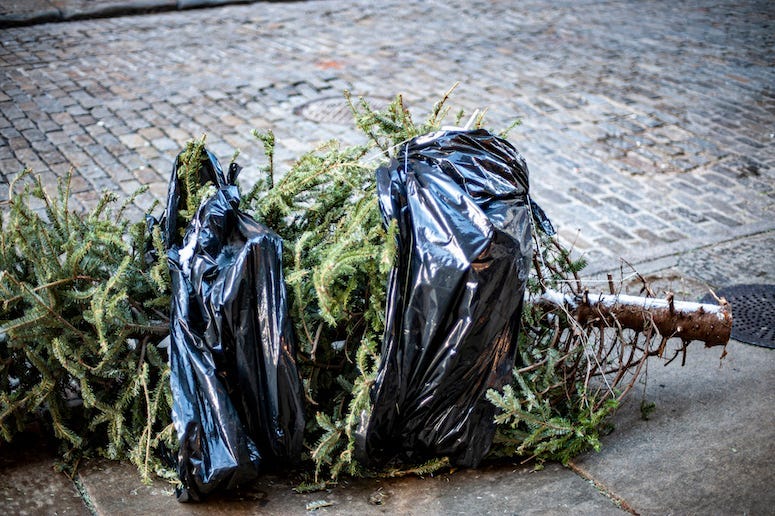
Christmas is so very close, so we can imagine how beautiful all those trees are looking.
We know once the holidays are over, the trees need to be discarded.
This year, instead of throwing trees on the street to be picked up, Dan Kraus, senior conservation biologist at the Nature Conservancy of Canada, says that there are alternative ways of getting rid of the tree that are actually incredibly beneficial to the environment. He says, "We’ve come a long way from the old days when most trees ended up in a landfill, and the municipalities do a great job of recycling your trees. But there is another way you can get rid of it."
Instead of placing it out for trash pickup, Klaus recommends cutting the branches off your tree, and then placing it in your backyard, where it can slowly turn back into soil, as well as provide a habitat for animals while it decomposes. He says, "It’s thinking about how nature recycles in the forest. You can learn about that, especially if you have kids. The tree is such an iconic thing, and to see it have this second life … and provide a habitat for wildlife over the winter."
It's a long process, but by spring, you'll be rewarded with flowers growing out of the tree, and the branches finally breaking apart. According to Kraus, "By the next summer … that material will start to turn into soil, and the actual trunk of your tree will provide habitat. Things like toads will live underneath it." Within two or three years, the entire tree will become soil, he added.
Kraus also suggests using the cut branches for decoration around the house, and checking websites that offer instructions on creating crafts from your treee and rustic decorations. Or if you want to celebrate wach holiday while remembering holidays past, you can cut the tree trunk into coasters, or even fashion bits of iot into new ornaments.
Kraus says, "Understanding where your tree has come from and learning about its natural life cycle is an opportunity for Canadians to really connect with the country’s landscape and environment. Maybe then when you actually get out to a forest, you’ll start to see the dead wood on the ground and think about what happened to that."
Via Global News
